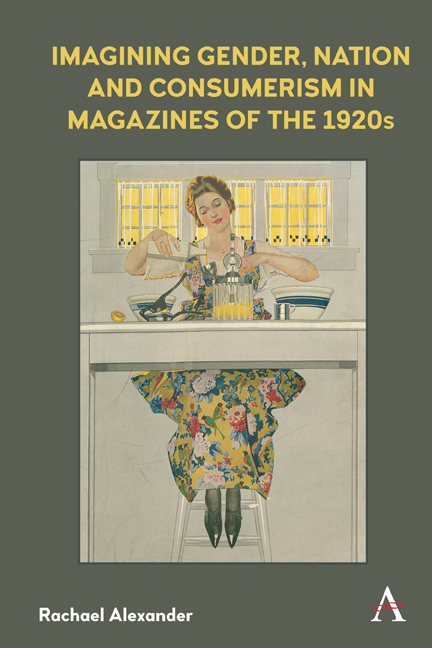Book contents
- Frontmatter
- Dedication
- Contents
- List of Illustrations
- Acknowledgements
- Introduction
- 1 Two Home Journals: A Comparative Approach
- 2 The Art of Femininity: Aspiration and Self-Improvement
- 3 The Home and Domesticity: Readers, Consumers, Citizens
- 4 Fashionable, Beautiful, Moral: Idealised Images of Femininity
- Conclusion
- Appendix: Content Analysis of Advertising from the Ladies’ Home Journal and Canadian Home Journal
- Notes
- References
- Index
4 - Fashionable, Beautiful, Moral: Idealised Images of Femininity
Published online by Cambridge University Press: 14 December 2021
- Frontmatter
- Dedication
- Contents
- List of Illustrations
- Acknowledgements
- Introduction
- 1 Two Home Journals: A Comparative Approach
- 2 The Art of Femininity: Aspiration and Self-Improvement
- 3 The Home and Domesticity: Readers, Consumers, Citizens
- 4 Fashionable, Beautiful, Moral: Idealised Images of Femininity
- Conclusion
- Appendix: Content Analysis of Advertising from the Ladies’ Home Journal and Canadian Home Journal
- Notes
- References
- Index
Summary
In the decades around the turn of the century, the two chief components of the upwardly mobile ‘aesthetic of imitation’ – culture and consumption – were the province of women, who were homemakers, magazine readers, and shoppers.
– Carolyn Kitch, The Girl on the Magazine Cover, 2001‘Appearing’ describes how the changed conditions of feminine visibility in modernity invited a practice of the self which was centered on one's visual status and effects. ‘Feminine visibility’ refers to the entire range of a woman's capacity to be seen: from self-apprehension in a mirror, to being seen in a public space, to becoming an image through industrialized visual technologies such as the camera. The Modern Woman was spectacularized.
– Liz Conor, The Spectacular Modern Woman, 2004Both the United States and Canada in the 1920s were cultures that were becoming increasingly focused on the visual. A burgeoning celebrity culture alongside rapidly improving technologies of film and photography were instrumental in this shift, as were the mass-market magazines.1 In addition to written content the mass-market magazine presented increasingly sophisticated images; iconography which served to construct aesthetically based ideals which their readers were encouraged to aspire to, but which were also used in a commercial capacity to sell advertised products and the magazines themselves. This use of imagery on a mass-market scale can be seen as evidence of this burgeoning visual culture, which granted growing importance to appearance. As Conor points out in her book The Spectacular Modern Woman, women were far more visible in public spaces – from the department store to the silver screen, in print and in person – with the result that, ‘for women to identify themselves as modern, the performance of their gendered identity had to take place within the modern spectacularization of everyday life’ (7), thus, ‘modernity's visions of women became part of women's self-perception as modern: gendered representations became embodied’ (8).
Conor's study focuses primarily on recognisable character types of the period, including the flapper and the screen star, who – while intermittently featured in the magazines’ pages – are not closely aligned with the intended audience of the Ladies’ Home Journal and Canadian Home Journal. Yet Conor's comment is nevertheless entirely applicable to the two magazines.
- Type
- Chapter
- Information
- Publisher: Anthem PressPrint publication year: 2021

